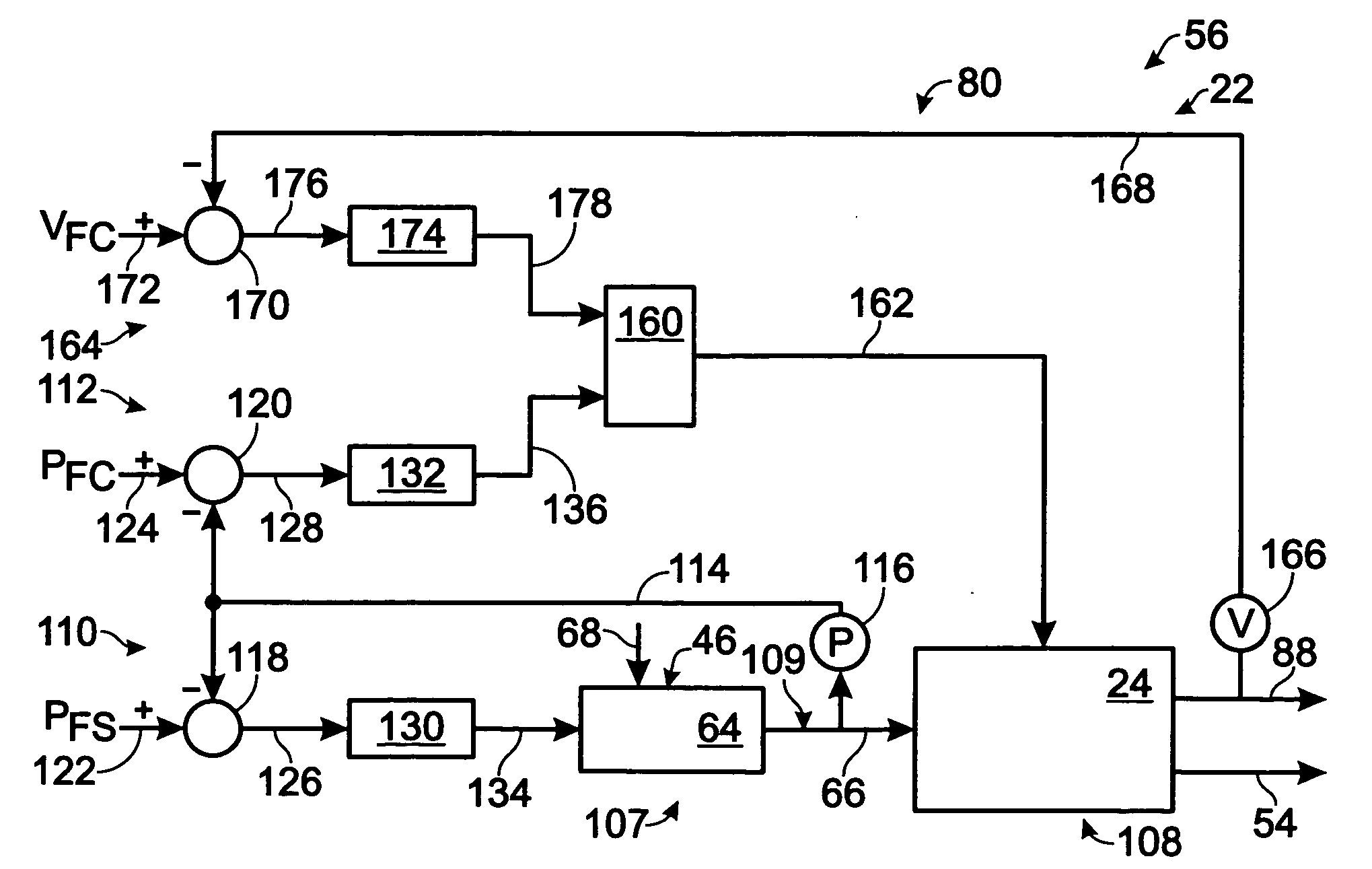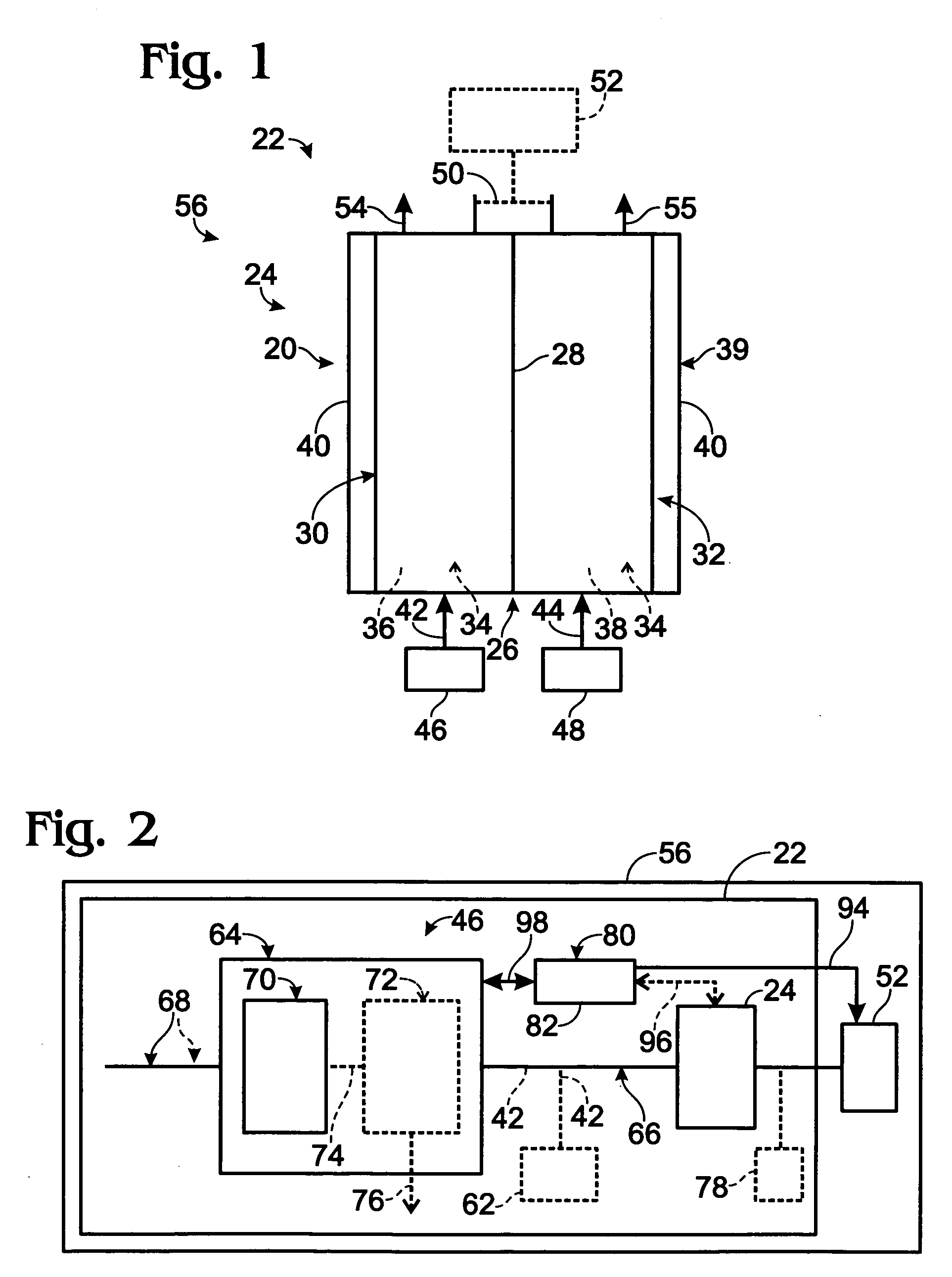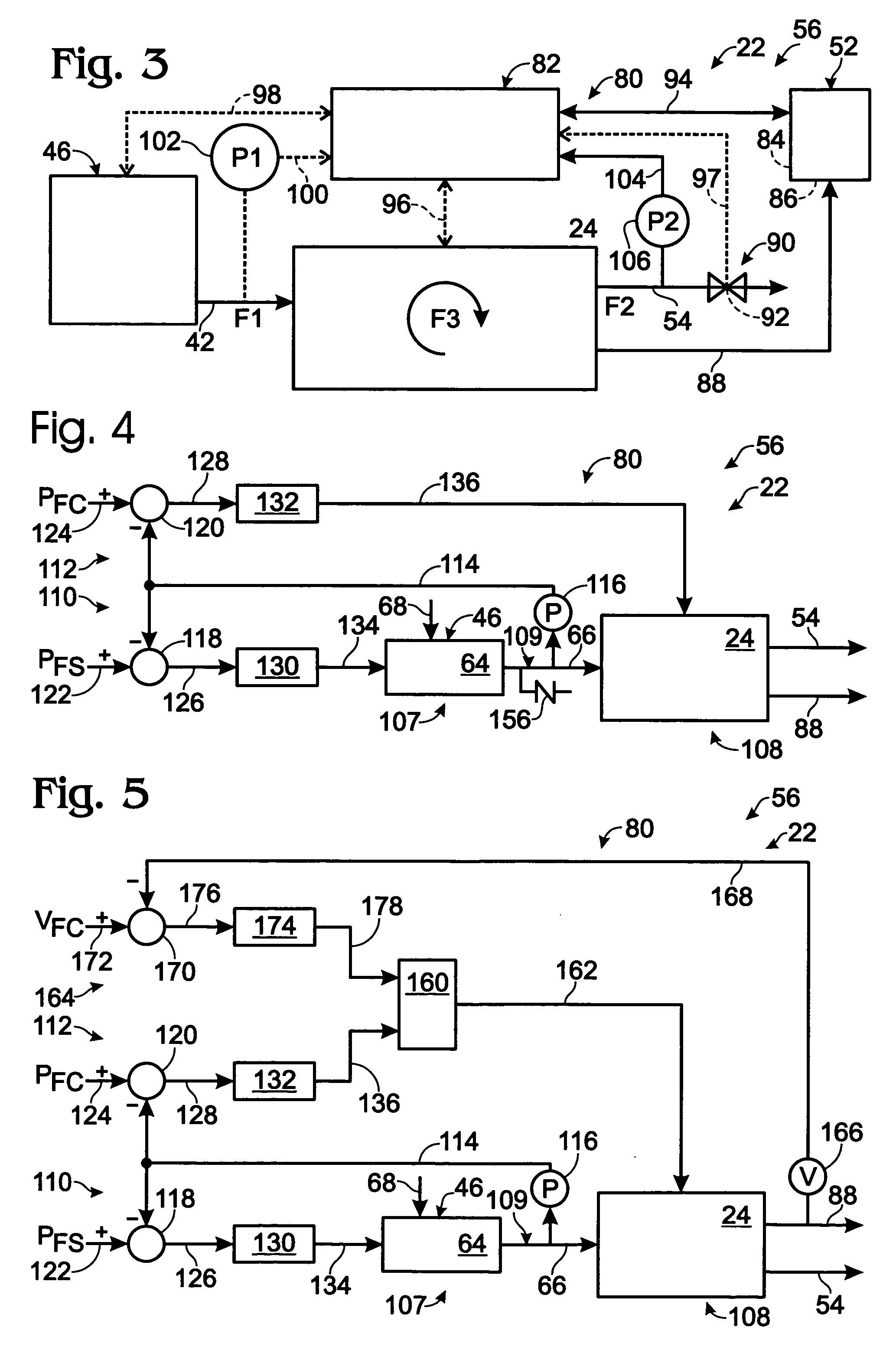Utilization-based fuel cell monitoring and control
a fuel cell and utilization-based technology, applied in the field of utilization-based fuel cell monitoring and control, can solve the problems of increasing increasing and increasing the consumption of fuel, so as to increase the production of electric current and fuel consumption, increase the fuel utilization rate, and increase the applied load
- Summary
- Abstract
- Description
- Claims
- Application Information
AI Technical Summary
Benefits of technology
Problems solved by technology
Method used
Image
Examples
Embodiment Construction
[0019] As has been mentioned, methods and systems are disclosed for controlling the operation of a fuel cell stack. As used herein, a fuel cell stack includes one or more fuel cells, whether individually or in groups of fuel cells, and typically includes a plurality of fuel cells coupled between common end plates. A fuel cell system includes one or more fuel cell stacks and at least one fuel source for the fuel cell stack(s). Additionally, an energy producing and consuming assembly includes one or more fuel cell stacks, at least one fuel source for the fuel cell stack(s), and at least one energy-storing / consuming assembly adapted to exert an applied load on the fuel cell stack.
[0020] The subsequently discussed fuel cell stacks and systems are compatible with a variety of different types of fuel cells, such as proton exchange membrane (PEM) fuel cells, alkaline fuel cells, solid oxide fuel cells, molten carbonate fuel cells, phosphoric acid fuel cells, and the like. For the purpose ...
PUM
| Property | Measurement | Unit |
|---|---|---|
| thick | aaaaa | aaaaa |
| pressures | aaaaa | aaaaa |
| pressures | aaaaa | aaaaa |
Abstract
Description
Claims
Application Information
 Login to View More
Login to View More - R&D
- Intellectual Property
- Life Sciences
- Materials
- Tech Scout
- Unparalleled Data Quality
- Higher Quality Content
- 60% Fewer Hallucinations
Browse by: Latest US Patents, China's latest patents, Technical Efficacy Thesaurus, Application Domain, Technology Topic, Popular Technical Reports.
© 2025 PatSnap. All rights reserved.Legal|Privacy policy|Modern Slavery Act Transparency Statement|Sitemap|About US| Contact US: help@patsnap.com



